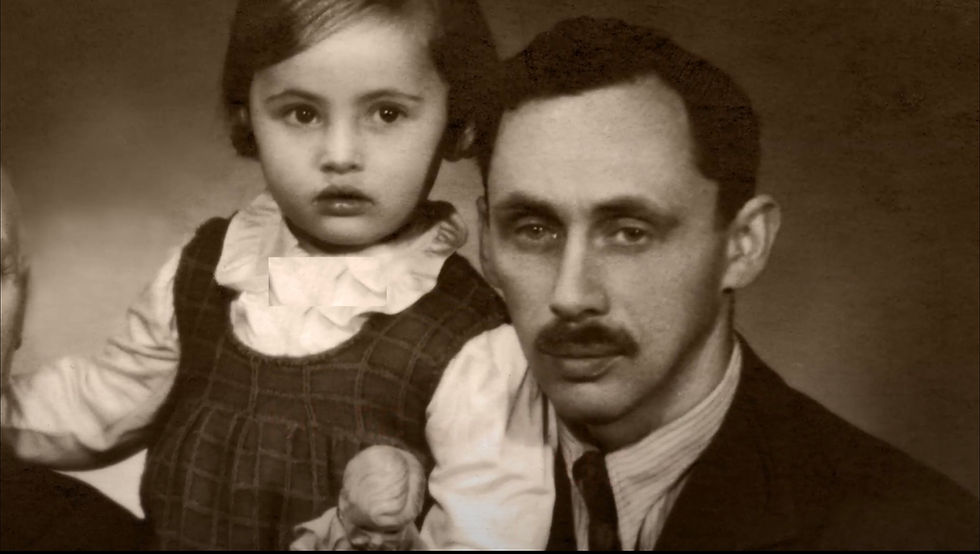A Dedication to the Weissfisch Family
- David M. Baron

- Apr 16, 2021
- 3 min read
Updated: Apr 22, 2021
Learn about an amazing voyage of Zalman’s brother-in-law’s family escape to Ecuador and uncovering a moment of hope in this incredible touching story.
The oldest of the Unreich children, Reitzi (Terézia or Teresa) married Lazar Weissfisch and had at least two beautiful daughters (Judith & Miriam). During their tragically short lives, the entire family was murdered in the Holocaust.
Recently, we uncovered a possible ray of hope or a chance the Unreich-Weissfisch family would have survived. Perhaps also reaching Ecuador, like the rest of the Weissfisch family, to live and tell their own story, all through the record of letters found in the Ecuadorian archive.

On the bright-side, some of the Weissfisch family members managed to escape fleeing Europe, like Lazar’s brother Wilhelm (William) who managed to reach Ecuador in South America and start a new life. While one other brother such as Osias reached Palestine, Israel. The following story was uncovered by the amazing Eva Zelig (Weissfisch) William’s daughter in a documentary called An Unknown Country, about Jewish exiles to Ecuador. It’s an incredible story of how war refugees were offered, at a desperate time, a home by Ecuadorians, which should always be recognized and remembered. Below are more details about the documentary.

Enclosed are the letters from the US Embassy to Ecuador’s Ministry of Foreign Affairs about the prisoners in Bergen Belsen with Ecuadorian passports, as well as the list of those prisoners that includes the names of Terézia and her two daughters at the bottom, including Miriam and Judita as Eva pronounced with her beautiful Latin accent.
These identified war refugees, were able to travel from Spain to Portugal to Ecuador with these papers. The Ecuadorian Consulate in Europe had the power of life of death in their hands, while some sold visas for personal gain and others acted humanely risking their own diplomatic positions to save lives. Some of these heroic people are mentioned in the documentary.
It’s unclear how Terezia and her daughters were possibly fortunate at that moment to be on these lists given the level effort to get a passport then. These papers were issued by the Ecuador’s Consulate in Stockholm, Sweden. It's possible agencies like the Red Cross, which was working with American Jewish Joint Distribution Committee, visiting the Bergen Belsen camp helped play a role. This camp held prisoners with Latin American passports, which served to exchange them for German POWs. A number of holders of such passports survived but the Nazis killed many despite the passports.
There’s also speculation, especially given the documented efforts by the Unreich brother’s attempting to save their parents and sister, documented in the dedication to the Unreich family blog post, played a part. Some believe it could have been either Maurice or Zalman, given their respective capacity and network connections, who attempted once more to rescue their family and give them a chance before falling victim to the Nazi criminal act.
***
An Unknown Country tells the story of those who were able to reach the shores of this small South American country -- barely known at the time. Featuring first hand accounts and archival material, the film opens a window on the exiles' perilous escape and difficult adjustment as they remade their lives in an unknown land.
Through the exiles’ personal testimonies, the documentary chronicles their heartbreaking search for a country that would take them in when most had closed their doors. It sheds light on why Ecuador, a small country with few resources, granted asylum to the refugees. It also explores the actions of Ecuador’s consuls in Europe: some exacted heavy fees for visas, others helped for humanitarian reasons.
The film provides fresh insights as it relates the refugees’ struggles to build new lives and hold on to elements of their European culture in what was for them an exotic, unfamiliar land. It explores the relations between the local inhabitants and the European immigrants in their midst, and highlights the contributions the immigrants made to the economic, artistic, and social life of their host country.
In the present day we follow Ecuador’s small Jewish community as the children of the refugees -- now living abroad -- return to Ecuador, the land of their birth. During this reunion, they reconnect with childhood memories and rediscover the unique and peculiar aspects of living in the country that welcomed their parents.
***
Notes:
Enclosed is a photo from Maurice Enright's collection. This sign provides context about the atrocity at the camp.

Maurice visited South America in the 1950s, but on the other side of Ecuador. Enclosed is a document issued by the the Brazil consulate in Buenos Aires. It's unlikely he was making contact with the Weissfisch family, but there was some business that required his travels and to change the true name of his parents from Unreich to his grandparent's last name Grunhut.









Comments